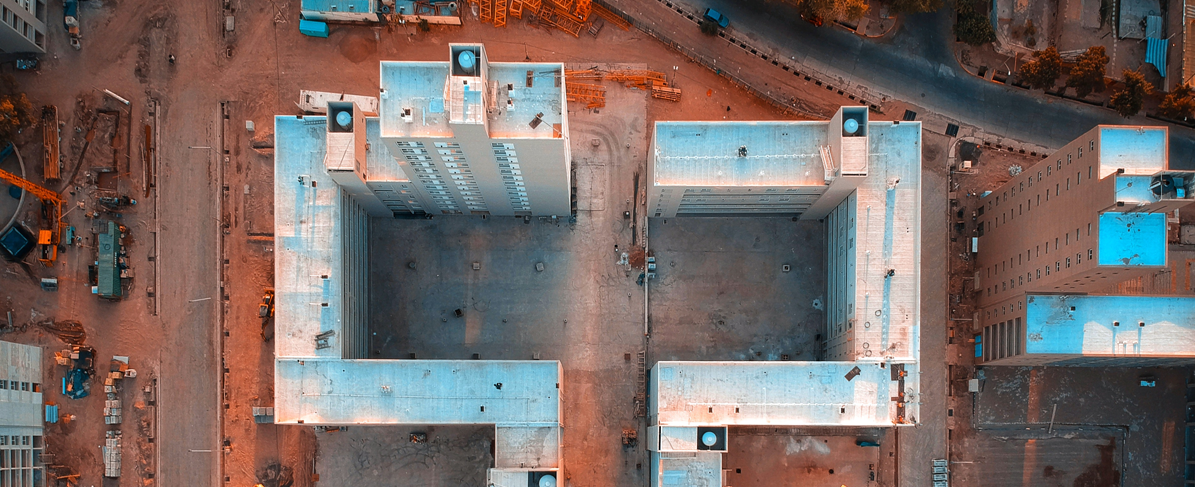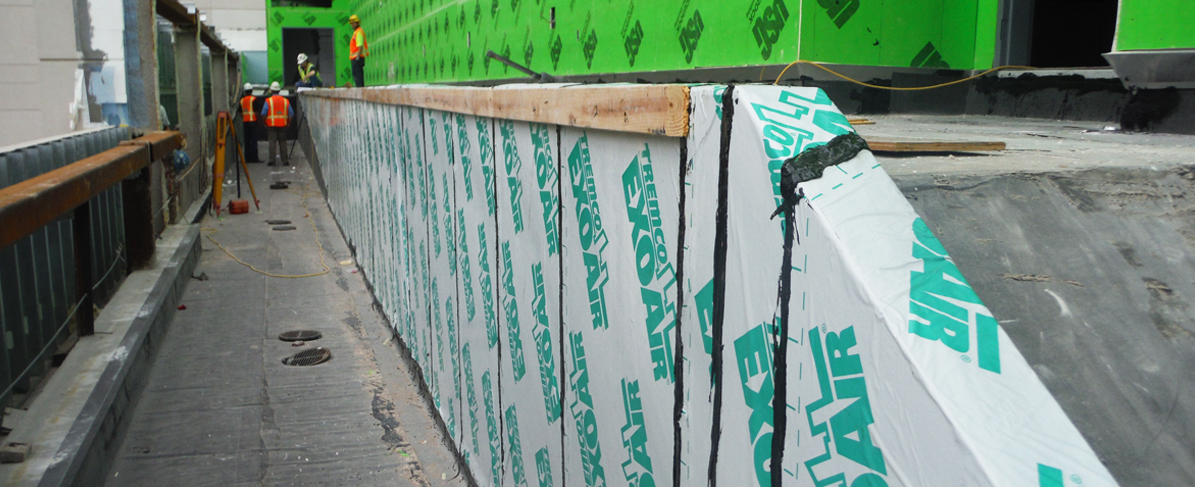The need to go above and beyond the minimum standards has become apparent in the devastation left by severe weather. While building codes should be the starting point, architects and builders must begin to consider and use products, materials, and systems that can weather storms while regularly delivering high performance.
Buildings need to accomplish three goals to reach beyond the standard codes that are in place today:
- Meet the current building code and pass any required inspections.
- Meet other building standards which establish more robust methods than are "required" by code, such as the FORTIFIED Home™, Multifamily™, or Commercial™ standards.
- Use building materials engineered and tested for higher performance and energy efficiency.
What Are Building Codes and Why Do We Need Them?
Building codes help ensure that the entire building is connected and protected. You can think of them as being quality control components for construction. They also protect building occupants and the property itself and may somewhat reduce insurance rates for the building owner. You get what you inspect, not what you expect. When enforced correctly, building codes offer the minimum requirements for wind resistance, water resistance in both the liquid and the vapor form, thermal resistance, fire resistance, and life safety.
We need building codes because they outline basic rules and regulations. However, if you're meeting the code, you are not ensuring the longevity and highest level of quality.
Meet Current Code and Pass Inspections
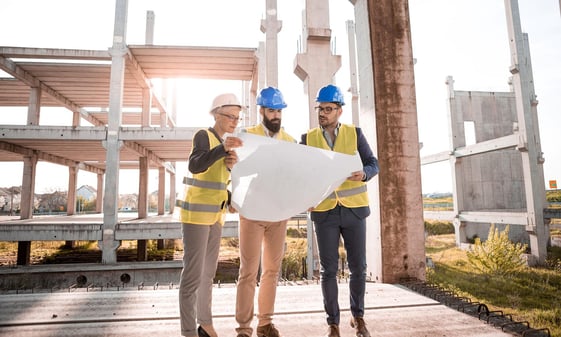
To avoid failures and imperfections in a building's integrity, the design/build team should work collectively and collaboratively to ensure that everyone understands the impact of the chosen product technologies.
A pre-construction meeting is an excellent opportunity to get everyone together to review building materials and how they will work together. The design team, consultants/commissioning providers, owner, construction manager (CM) or general contractor (GC), and all building enclosure trades and respective manufacturers can use this time to communicate before starting construction. This is also the time to engage a FORTIFIED Evaluator™ if you aim to achieve a beyond-code certification.
Here are some recommended conversations to have that will help to verify that your structure goes beyond standard requirements:
- Learn how the connections will expand and contract. Consider all anticipated building movements to ensure the connections can withstand the expansion and contraction. For example, sealants should remain intact, flexible, adhered, and performing.
- Consider UV exposure. Know the impact of UV exposure on exposed technologies throughout the construction process and the building lifespan. Determine any areas of weakness and adapt accordingly.
- Learn the owner's expectations. Understand what the owner expects in terms of long-term performance, and ensure that all selected products have the suitable physical properties to achieve those goals.
- Determine all installation details. Know when the products are being installed, the installation sequence with other trades, how they will be installed, and what that looks like for different technologies. Improper product sequencing is a common mistake that can be avoided.
- Understand product adhesion and compatibility. When different building material manufacturers and sub-trades work together on a project, it's essential to understand the adhesion and compatibility properties of the products and substrates to decrease the chance of incompatibility or adhesion failure.
Meet Other Building Standards
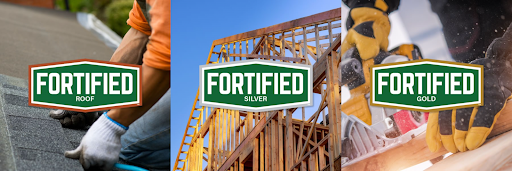
From extreme weather to everyday events, going above and beyond code will provide an unmatched level of resilience that better protects a building and its occupants. Combining building codes and a little bit of extra effort can deliver a much higher level of resiliency. The most prolific and well-known example of this is the FORTIFIED program. FORTIFIED is a voluntary construction and re-roofing program designed to strengthen homes, commercial buildings, and multifamily developments against severe weather, such as high winds, hail, hurricanes, and even tornadoes. The FORTIFIED Standard was created by the Insurance Institute for Home and Business (IBHS).
Traditionally, the roof structure is the weak link because building codes have not focused on the roof system. FORTIFIED closes that gap by providing a secondary water barrier, protecting roofs and structures more than the standard building code requirements.
There are three FORTIFIED standards – FORTIFIED Home™, FORTIFIED Commercial™, and FORTIFIED Multifamily™. Within each standard, three levels progressively address the disaster resilience of a structure:
- FORTIFIED Roof™: A wind-driven rain management system for advanced protection against water damage. This system also provides superior wind uplift resistance by using ring shank nails, which have double the strength of nails used in traditional homes.
- FORTIFIED Silver™: Strengthens "damage amplifiers" to reduce attached structures and openings losses. These include gable ends, porches, carports, parapets, false fronts, garage doors, commercial doors, such as roll-up, and chimneys. FORTIFIED Silver also adds opening protection to windows and doors to keep out wind, water, and flying debris in hurricane-prone areas.
- FORTIFIED Gold™: Ensures that the structure is tied together through a continuous load path. A continuous load path is when the roof is tied to the walls, the walls are tied to the floors, and the floor is tied to the structure's foundation, thus helping the structure stand strong in high winds.
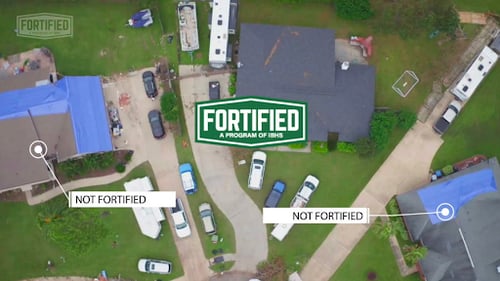
Based on the FORTIFIED program used, other requirements may be needed. For example, FORTIFIED Commercial also focuses on mechanical and electrical equipment protection and backup power to reduce downtime, loss of inventory, and maintain critical functions.
Once the project is complete, a FORTIFIED Evaluator™, a third-party inspector, comes on-site, verifies that the structure meets the FORTIFIED standard, and will submit documents and photos to IBHS. IBHS will then issue a designation certificate or letter of compliance for commercial and multifamily properties that prove that structure has met all requirements. Only a FORTIFIED Evaluator can conduct the certification process. Local, state, and federal government agencies endorse FORTIFIED, while many builders and contractors have adopted FORTIFIED into their regular building practices.
Hurricane Sally in 2020 was one of the most recent and significant weather events to prove the importance of the FORTIFIED program. Pictured above is one of 17,000 FORTIFIED homes across coastal Alabama that were threatened, and 95% of those had little to no damage — proof that these science-based construction practices reduce the risk of damage from extreme weather events and deliver meaningful value to homeowners.
Use High-Performance and Resilient Building Materials
Choosing the right building materials is vital to a building's overall performance – both now and well into the future. And while you want to make sure that all materials meet the requirements to bring your building up to code, there are other questions you should ask to give your structure the highest level of performance and protection.
Here are some essential items to consider when choosing your building materials:
- Are you getting the correct R-value? As energy codes evolve, higher R-values are required, but it isn’t as simple as looking at one number. Consider the possibility of thermal bridging and the types of condensation that could damage the structure. When evaluating products and their R-value, view the whole system and how changes in effective R-value may influence the structure's energy efficiency and long-term costs.
- Different materials can provide different levels of protection. Evaluate all of your materials for adhesion, compatibility, and the installation's impact on the thickness and long-term performance. Make sure they are designed and engineered using the technology needed for a continuous barrier and consider any regional requirements.
- Consider the benefits of insulated concrete forms (ICFs). Regarded as a superior option to traditional methods and materials, ICFs are innovative stay-in-place concrete forms that create a superior building envelope for disaster-resilient buildings and homes. A great source of continuous insulation, ICFs are incredibly energy efficient and provide the structural integrity level needed to create a high-performance building in all respects.
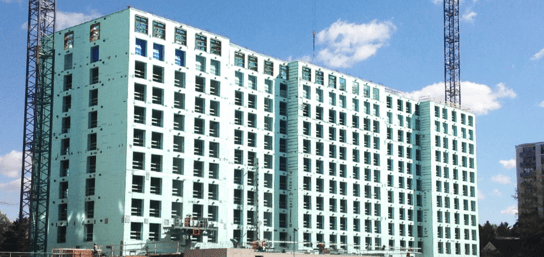
It's Time to Go Beyond the Code
Start exceeding the basic code standards and build FORTIFIED structures that offer the energy efficiency and resiliency your project needs to stand the test of time.
To earn AIA credits on-demand and learn more about the FORTIFIED standards and other measures you can take to go beyond the code to build more resilient structures, create a free account on the Tremco CPG Body of Knowledge and watch the webinar "Building Beyond Code- Why code compliance isn't enough and how we can do better".


